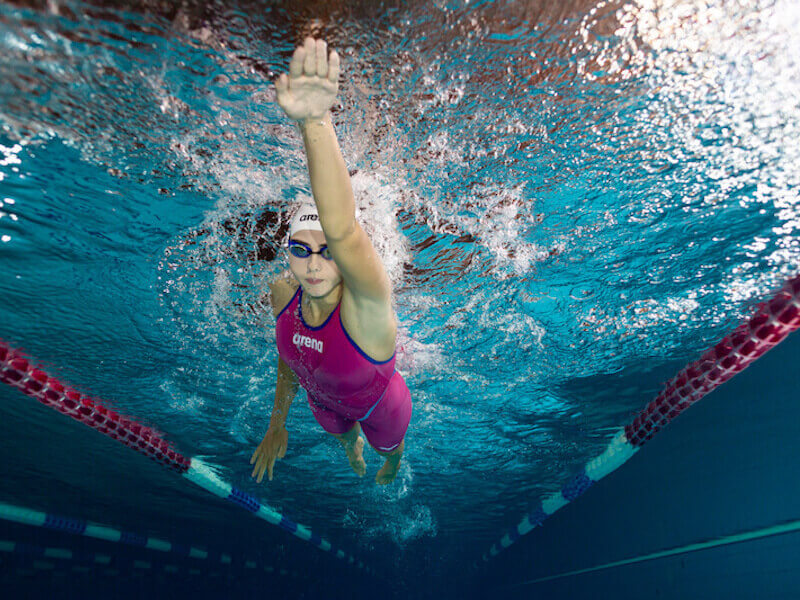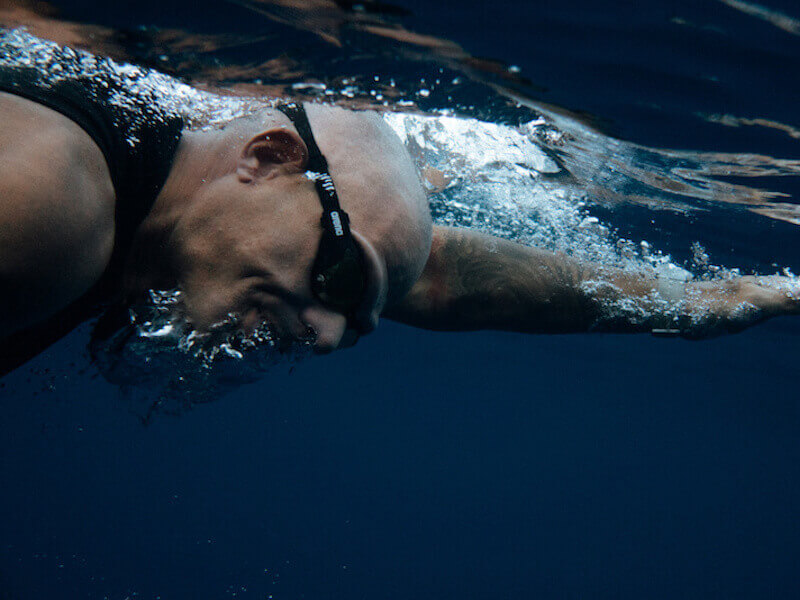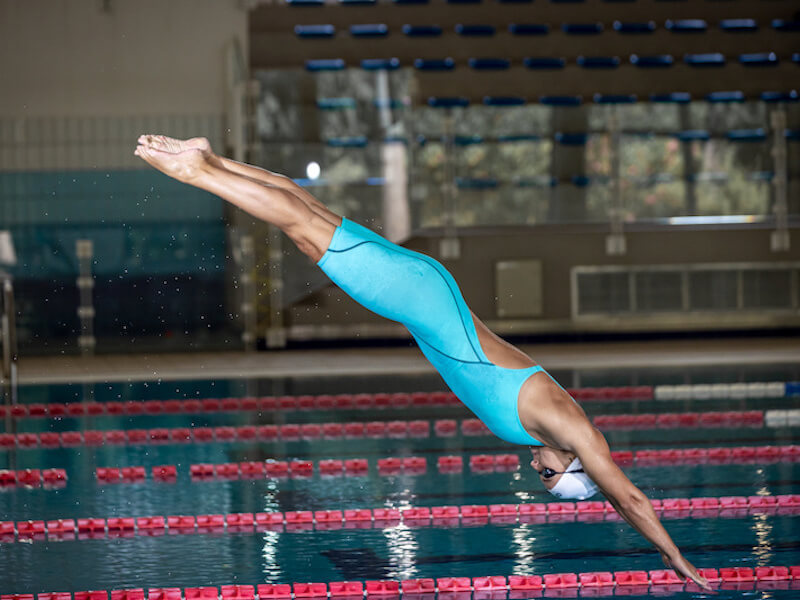What You Should Know About Using Earplugs for Swimming
Any physical activity has increased risks when performed regularly and swimming is no exception. In contact sports, more and more studies are showing the negative effects of hard hits to the head. These risks are an unavoidable part of those sports.
Thankfully swimming is a low-impact pursuit and chance of injury is much lower than most on-land activities, even with tough regular drills. Amphibious as we may well be though, human beings can incur some damage from regular exposure to water.
If you’re getting any symptoms of damage to your ears, or you’re simply curious about protecting yourself from long-term exposure, earplugs for swimming could be just what the doctor ordered.
What Is Swimmer’s Ear?

Have you or a friend ever suffered from ear infections such as swimmer’s ear (or otitis externa)? Chances are if you spend enough time at the pool or open-water swimming, you’ve heard about it.
Swimmer’s ear occurs when your natural defenses have been overwhelmed by too much exposure to water. Natural earwax has been washed away and then too much moisture in the ear canal creates the perfect environment for bacteria to grow.
The outer ear canal then becomes infected. This is the area between the eardrum and the outside of the ear. At its worst it can cause total blockage of your ear canal, mild hearing loss, severe pain, and even fever.
Prevention Is Better Than Cure
That’s enough of the scary stuff — let’s get proactive. It’s always better to not get ill in the first place, so you can remain healthy and in the pool. If you’re an open-water swimmer, staying safe is crucial, so be aware of any announcements of high bacteria counts in your local lakes or rivers.
You can prevent swimmer’s ear by keeping your ears dry in the usual ways. Tilt your head both ways after a swim to drain out any trapped water. Then dry your outer ear with a towel or by using a blow dryer.
But, nothing beats not letting your ears get wet in the first place. This is where earplugs for swimming come in.
What Are the Best Earplugs for Swimming?

The good news is that on the whole, swim earplugs, like many other swim training tools, are fairly inexpensive. The even better news is that there’s not a huge amount of choice out there, meaning you won’t be overwhelmed by a night of internet research.
If your ears are giving you excessive trouble, you may consider visiting an audiologist to get a custom fit. Those types of earplugs are a lot more expensive though, so we recommend trying a more affordable option first.
Before we introduce you to the best choice for swimming earplugs, we want to mention two other types of earplugs you might see on the market: silicone putty earplugs and foam earplugs. Silicone putty earplugs are made of moldable silicone, but require extra attention. They may be difficult to clean, tricky to remove, and can even irritate the eardrum in some cases if not inserted correctly. Foam earplugs are great for hearing protection and noise reduction, but the porous foam won’t keep water out, so they’re not recommended for water protection.
When it comes to earplugs for swimming, silicone earplugs are your best option.
One final note on earplug safety: You should never dive while wearing your earplugs, as water pressure could push them too far into your ear canals.
Silicone Earplugs
Silicone earplugs are usually flanged and have a molded design.
You’re best off using a pair of silicone swimming earplugs, since you can usually hear better in the pool with them. Still being able to hear your coach and friends with added sensory awareness allows for a better swimming experience.
Plus, there’s more longevity in a high-quality reusable silicone earplug; they can last you up to a month if looked after well, thanks to higher levels of durability. You can also wash them easily due to their more solid shape.
Some brands of silicone earplugs are not malleable, and it can be hit or miss if you get the comfort and fit you desire. Thankfully, arena’s Earplug Pro moulds to the shape of your ear and the three-ring design keeps water out and prevents irritation. In addition, the larger outer ring keeps you from pushing the earplug too far into your ear.
Earplug Tips and Tricks

Using earplugs for swimming is pretty simple — just plug and play. But there are a few tips we’d like to pass on that will keep you and your earplugs safer.
Keep Your Earplugs in While Showering
It may seem like a natural thing to take out your earplugs when you take off your swim cap so you can wash all that chlorine off your body. But, you’re just inviting another opportunity to fill your ears with water.
Choose Bright Colors
Earplugs are small and sometimes they fall out of your ears, especially when you’re still getting used to using them. Try to choose some earplugs with bright colors so if they do end up at the bottom of the pool, you don’t spend all day looking for them.
Keep Them Clean
The main job of your earplugs is to stop your ears from becoming a breeding ground for bacteria. You have to put the work into it by cleaning your earplugs after each swim.
Make sure to clean them using warm, soapy water to get rid of any chlorinated water or bacteria-laden water from lakes and rivers.
Do I Need Earplugs for Swimming?
You may be one of the lucky ones who can swim their whole life, never even noticing any irritation of the ears. Or you may find yourself suffering with an earache after your second pool session and needing a prescription for ear drops. Either way, adding a level of basic ear protection to your swim training could be a good idea.
Just adding an extra night session to your swim schedule can mean many extra hours of time spent in the water in the long run. This translates into time when your ears are exposed. If you notice an extra level of irritation from the longer exposure time, adding earplugs would be the obvious solution.
Be aware though that if you use swimming earplugs in the pool, you may be less aware of others around you, which could cause accidents. You might also find it harder to hear the instructions of your coaches.
Overall, using earplugs for swimming is a very inexpensive way to keep you out of the doctor’s office and in the pool. At arena, we have a huge range of swim training tools that will help keep you safe in the water, from swim caps that keep your earplugs secure to goggles to protect your eyes.
Written by:
Thomas Board
Tom is an outdoor and adventure travel writer and full-time firefighter based in Leeds, UK. He spends his free time summiting the mountains of Wales and wild swimming in the lakes of Snowdonia all year round.







